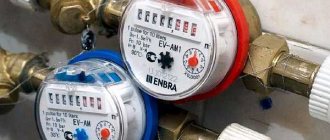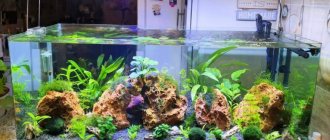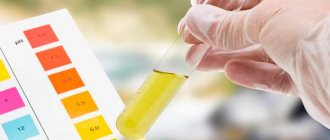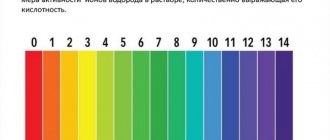Hardness in drinking water
The term water hardness refers to the amount of dissolved and undissolved salts present in natural water deposits. The water may be too soft or too hard. Both options are harmful. A lack of salts disrupts the water-alkaline balance in the body; an excess causes multiple diseases of important organs: the heart, kidneys, skin, and liver. If there is an excess of salts, the liquid has a bitter metallic taste, may be cloudy, with different color shades.
Compliance with drinking water hardness standards is very important for consumers. Salts can cause poisoning; they cause stomach upset, yellowing of the skin, and other troubles. A high concentration of hardness salts negatively affects the operation of household appliances - impurities form difficult-to-clean scale and rocky lime deposits. Because of them, slag is formed in the water supply system, and household/industrial appliances, plumbing, and hydraulic equipment quickly fail.
Additional Information
Interesting facts about water purification:
- In many countries there was a tradition of throwing silver coins into a well. Silver reacts with salts, but not with all. The main reason for not using this metal in cleaning is toxicity. According to SanPiN standards, silver is assigned the 2nd class of harmfulness, but it is dangerous only when the substance accumulates in the body.
- Untreated water has been the cause of many epidemics of typhus, cholera and other diseases, as well as low life expectancy due to the increase in the amount of harmful compounds in the body. Humanity has tried to create purification facilities since ancient times. The first filtration methods were invented in Egypt.
- There is a myth that you cannot boil water several times because it creates harmful substances, but this is not true. The composition of the solution does not change due to repeated heating.
- Many people believe that bottled water is cleaner than filtered water, but they have the same level of impurities.
You can select a suitable cleaning system with the help of QUANTA + specialists. Filters do not retain all compounds, so before purchasing, you should find out what salts the water is saturated with.
What salts cause the hardness of natural water, and where do they come from?
The main hardness salts present in water are different compounds:
- nitrates, chlorides, magnesium carbonates;
- bicarbonates, sulfates, calcium sulfides.
After natural evaporation or after forced evaporation of an aqueous solution, the salts become visible and remain in the vessel. They are the ones who form deposits on the bottom and walls of dishes, teapots, and sanitary equipment. Based on the hardness of the water, it is easy to determine which salt is most clearly present in it. Magnesium impurities are more difficult to dissolve and give drinks a bitter taste.
What determines the presence of hardness salt in water?
The degree of hardness for drinking water is determined by the type and amount of aqueous salts. The indicators are different in different areas. Salts penetrate into aquifers, being washed out of rock deposits: limestone, gypsum, dolomite.
Water hardness indicators are variable values, they depend on various factors:
- processes occurring in the earth's crust;
- layers of fossil deposits through which water flows pass;
- intensity of dissolution of sandy rocks;
- changing seasons.
Waters lying close to the surface and those lying at depth have different parameters. They are higher where the water flow passes through layers of limestone. In the spring, with an abundance of melt flows, when they enter water bodies and seep into underground water layers, the amount of salts decreases. In winter the concentration is higher.
Causes of water hardness
During the water cycle in nature, liquid turns into steam and rises to the upper layers of the atmosphere.
After condensation, it falls out in the form of precipitation and does not contain impurities that affect hardness, but passing through a layer of the earth’s crust, the liquid dissolves various rocks that contain potassium and magnesium. When water becomes saturated with these elements, it increases its hardness. In the sea it is always hard due to the high concentration of sodium chloride. If it is necessary to reduce the concentration of potassium and magnesium ions, various methods can be used to reduce the amount of salt impurities.
Classification of water with hardness salts
What hardness salts are present in water? There are general, permanent and temporary hardness:
- Carbonate (temporary) liquid - alkaline solution with pH>8.3 contains bicarbonates, which precipitate when heated, forming scale.
- Non-carbonate (permanent) liquid is characterized by the presence of anions (chlorides, nitrates, sulfates), which are retained even when the liquid is boiled.
- Total Jo is the summed concentration of the presence of magnesium and calcium in the form of ionic compounds. The amount is obtained from the addition of temporary and constant quantities: Zho = Zhk + Zhk.
When cleaning, all types are taken into account: Jo, Zhk, Zhk. The maximum permissible concentration of drinking water for hardness (briefly: MPC) is usually set for total Jo.
Water hardness standards
Standardization is determined by standardization documents: GOST, SanPiN, TU. Accurate data is obtained by testing samples in accredited laboratories and sanitary and epidemiological stations. To record laboratory readings, international units of measurement of water hardness are used:
- mol/m3 - the number of moles per cubic meter of liquid;
- mg-eq/l - milligram equivalents per cubic decimeter (per 1 liter);
- °F - degree of hardness.
The measured unit of water hardness 1°F is equal to 1 mEq/l and equal to 1/2 millimole per liter. The permissible values for calcium and magnesium ions are different: for Ca2+1°F=20.04, for Mg2+1°F=12.16 mg/l (note: these indicators are inserted into the calculation formula, see below in the text*) .
The structure of water can be soft, medium, or hard. Distilled, boiled, rain, and melt water is considered soft. Liquid of medium hardness comes from centralized water supply systems. Artesian and spring water also differ in average values. Water production from salt water bodies that requires desalination is classified as highly hard. The table shows salt concentrations in different dimensional units.
Maximum permissible content of hardness salts in water
| Water hardness level | Indicator in mEq/l | Indicator in °ZH | Indicator in ppm |
| Too soft | up to 1.5 | up to 1-1.5 | 0-70 |
| Soft | 1,5-4 | 1,6-4 | 71-140 |
| Medium hard | 5-8 | 5-12 | 141-210 |
| Highly rigid | 9-12 | 13-22 | 211-320 |
| Super hard | over 12 | 23-34 | 321-530 |
Impact on human health:
How does hard water our body? Doctors associate the appearance of urolithiasis with this particular feature of water. But at the moment there is no official confirmation of this hypothesis. But we know that too hard water adversely affects the organoleptic properties of water, giving it a bitter taste. Also, hard water dries out our skin and hair. However, it is not recommended to completely switch to soft water. Our body needs calcium and magnesium salts to strengthen the cardiovascular system. But it is better to water indoor plants with soft or melt water.
Hardness standards for drinking water
SanPiN indicates variable values, depending on the use of aqueous solutions. Water hardness according to GOST is also regulated depending on the type and purpose of liquids:
- For ordinary mains water, the concentration of magnesium is determined (up to 50 mg/l).
- In bottled, the indicators Ca = 25-130 and Mg = 5-65 mg/l are taken into account.
- For water used for domestic and drinking purposes, the maximum permissible concentration for drinking water hardness should not exceed 350 mg/l (7-10 mg-eq/l or 1-1.5 grams per liter).
- For drinks of the highest category, the norm is Jo = 1.5-7, for the first category no more than 7 mEq/l.
- According to WHO standards, drinking water contains 10-30 mg of magnesium and 20-80 mg of calcium per liter.
- The total hardness for drinking water according to EC is not higher than 1.2 mEq/l.
Regulatory regulations have established lower limits for the hardness of drinking water. Normal water must contain a small amount of salts. Calcium is beneficial for the body; its microelements are absorbed better from drinks than from foods. The mass concentration of calcium in drinking water should not be lower than 0.12, magnesium less than 0.04, sulfates and chlorides less than 2 mg/dm3. Soft water washes calcium out of the body, causing unpleasant consequences - bones and teeth are destroyed. Too hard causes the formation of stones in the body and disrupts the functioning of the excretory system. Salt water has a destructive effect on hydraulic system equipment, clogs the walls of pipelines with sediment, and increases heating costs.
If there are more hardness salts in water than prescribed by standards, it must be purified to acceptable levels. The plate indicates the degree of salt concentration on the hardness scale with indicators in ppm.
Hardness scale
| Salt concentration | Value in ppm (in ppm or mg/l) |
| Dangerous to life | over 500 |
| Maximum permissible | 500 |
| Average indicator of waters extracted from natural reservoirs | 400 |
| Permissible value of water supplied from the water supply system | 300 |
| After passing through carbon filters | 170 |
| After cleaning by reverse osmosis system | 0-50 |
Hardness standards for process water
What should the boiler water hardness be? The standard is set separately for boilers with different pressures:
- up to 1.4 MPa (14 kgf/cm2) = 15-20;
- 2.4 MPa (24 kgf/cm2) = 10-15;
- 3.9 MPa (40 kgf/cm2) = 4-10 µmol/dm3 (µg-eq/dm3).
The first (smaller) figure is indicated for boilers operating on liquid fuel with a heat flow of over 350 kW per square meter. meter. The second (larger) figure is for boilers operating on other types of fuel with a heat flow of up to 350 kW/m2.
GOST for determining hardness in water will tell you what parameters are acceptable:
- for electronic production,
- for electroplating,
- for energy,
- for medical processes,
- for make-up and additional water for boilers.
Drinking water is regulated separately according to the hardness of different categories: distilled, network, draft. For iron salts, indicators are calculated separately.
How to determine water hardness
It is very difficult to determine by touch whether water is hard or soft. The term “stiffness” arose because after washing fabrics lose their softness, wooliness or silkiness, and become unpleasantly hard to the touch. Weaving or knitting weaves, regardless of density, have a porous structure. Salts are added to the fibers, which makes things rougher, tougher, and denser after washing.
You can determine water hardness both in the laboratory and at home. The presence of hardness salts can be determined visually:
- The drinks have an unpleasant bitter taste.
- Teas take longer to brew than usual.
- When cooked, the meat becomes unpleasantly tough.
- Salt deposits are noticeable on the walls of the dishes.
- A large amount of scale forms on the appliances.
- A whitish residue remains on the hair after washing and on the comb.
- Soap and powder do not foam well, and their consumption increases during washing.
Increased hardness of drinking water can cause damage to health and heating appliances. Without knowing the exact salt concentration indicators, it is difficult to calculate the dose of anti-scale agents for washing and drying units or program a coffee machine for cleaning. It is difficult to ensure a comfortable life for fish in an aquarium or to choose the right cleaning filters. In addition to visual assessment, it is better to use more accurate measuring methods for determining the hardness of drinking and industrial water.
Water hardness measurement
Before consumption, before watering the garden, before supplying water to pipelines or before technical use of water for production processes, it is useful to check for the presence of hardness salts. Such a check will eliminate consumer claims against water supply companies and extend the life of expensive industrial equipment.
To measure water hardness, household and professional instruments are used:
- Medical strips sold in pharmacies give good results with an accuracy of 1-2°F.
- Express tests for an aquarium allow you to monitor the water supply to containers with aquatic inhabitants or check solutions intended for watering plants.
- Salinity meter, spectrum analyzer, TDS and EC meter show salt content and other parameters: electrical conductivity, solution resistance.
It is helpful to order a test from a laboratory to obtain accurate results with supporting documentation. Then you don’t have to think about how to determine water hardness, you don’t need to buy measuring instruments or calculate indicators based on indirect parameters using formulas.
How to determine water hardness using the formula
You can determine water hardness using the formula. To determine the general indicators, you need to perform the following calculation:
Jo = [Ca2+] + [Mg2+] = (m(Ca2+))/(E(Ca2+) x V(H2O)) + (m(Mg2+))/(E(Mg2+) x V(H2O)),
Where:
[Ca2+]; [Mg2+] is the concentration of calcium and magnesium ions, in mEq/dm3;
m(Ca2+); m(Mg2+) - ion content in mg;
V(H2O)—volume of water, dm3;
E is the equivalent mass of ions* (its values have already been given in the text: Ca2+ = 20.04; Mg2+ = 12.16 mg/lil g/mol).
The calculated result is obtained in units: mg-eq/dm3.
Next, temporary or permanent stiffness is calculated. The calculated value is subtracted from Zh and the values of all three categories of J are obtained.
Carbonate FA is calculated using the formula:
Lc = [HCO3-] = (m(HCO3))/(E(HCO3) x V(H2O))
Non-carbonate: Zhk = Jo-Zhk.
Damage caused by hard water
Let's consider the negative impact of excessively hard water on the human body, household appliances and communications. The higher the hardness parameter, the stronger the value of each type of harmful effect.
Harm to human health and pets
- High hardness promotes the growth of urinary stones and the development of urolithiasis. This is due to the accumulation of salts that simply do not have time to be eliminated from the body.
- When washing your face, hard water dries out your skin . This is due to the appearance of “soap slag” formed from soap, which is not capable of lathering and dissolving in hard water. These soap slags clog the pores, preventing them from breathing freely, as a result of which skin inflammations can develop and haunt the itching and burning of the skin.
- The formation of a thin crust on the hair destroys the natural fat film. This happens in the same way as on the skin of the hands - “soap slag” is not washed out and gradually accumulates. This can cause an itchy scalp , dandruff, and even hair loss.
- The effect of very hard water on animal health is no different from the effect on the human body. There is a high risk of developing urolithiasis. For pets eating dry food, this risk increases several times. Problems with hair and skin may occur in both dogs and cats when they are bathed regularly.
- The cooking process slows down ; due to the numerous salts, the meat is poorly cooked. This leads to poor protein absorption and can cause gastrointestinal diseases.
Damage caused by hard water to equipment and household items
- Due to the presence of a large amount of salts in water, soap products foam extremely poorly and wash away dirt . Therefore, the amount of powders, detergents intended for washing dishes and other household chemicals will have to be increased sharply.
- In addition to poor foaming of soap products, contact of hard water with them results in the formation of stains and hard deposits on plumbing fixtures and the surface of dishes, as salt deposits form. Such deposits are difficult to wash off dishes and also negatively affect plumbing fixtures, gradually destroying their surfaces.
- In the process of heating water in electrical appliances, salts do not simply precipitate, but crystallize and fall out in the form of scale . It is scale that is the main reason for the rapid breakdown of water heating devices.
- Hard water leaves stains, streaks and dirty deposits on freshly washed items, colors fade, prints and designs turn gray. It is very difficult to get rid of them and this, again, requires increased consumption of detergents. Fabric washed in hard water becomes rough and inelastic because the salts clog up all the free space in it. The strength of clothing and linen decreases.
Harmful effects of water with increased hardness on communications
- Hardness salts, just like on household appliances, precipitate or crystallize, forming scale . Scale thins the walls of communications, subsequently completely destroying them.
- The abundance of hardness salts that precipitate or scale leads to frequent failure of large water heating installations, such as boilers.
- In circulating water supply systems, the resulting scale deposits, water stones and sludge from salts reduce the permeability of pipes, and heat transfer decreases. Water pressure drops, the amount of water in radiators decreases, water inlets and outlets from houses become clogged, which can lead to complete blockage of communication networks. All this increases energy costs.
At home, the most rational way to reduce water hardness is to use filters that will purify water for drinking and cooking from excess salts. Ideally, water for any use in the home should be filtered.
But at the same time, we must not forget that the stiffness indicator must be equal to a certain average value. Water that is too soft is also of no benefit. It increases the risk of developing cardiovascular diseases in humans, flushes salts from the body, causing the rapid development of rickets and thinning of bones. In communication systems, soft water causes corrosion of metal pipes.
Save the article on social networks:
Alex, April 28, 2021.











